|
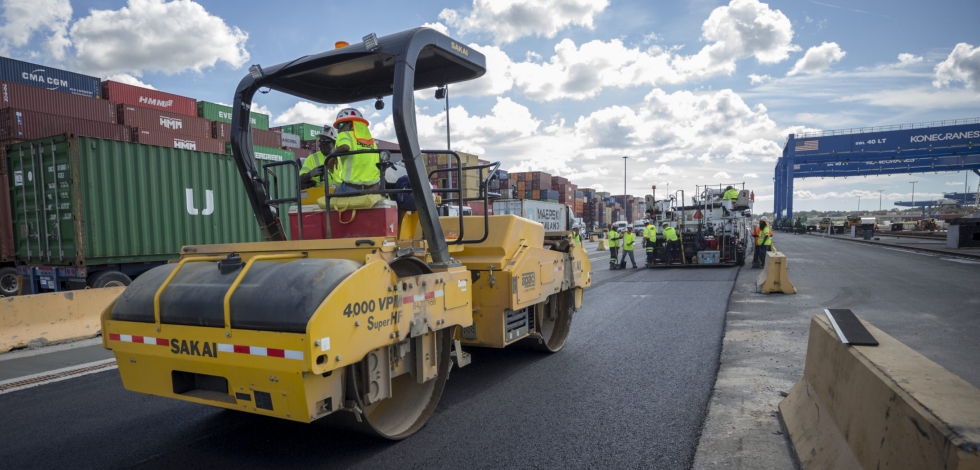
Georgia Ports Authority Capacity Efforts Paying Off
Savannah marks 16 consecutive months of record growth.
Dec. 10, 2021 - The Port of Savannah handled 495,750 twenty-foot equivalent container units in November, a 6.7 percent increase over the previous year and a new monthly record for the Georgia Ports Authority.
“I would like to acknowledge the incredible teamwork on and off our terminals that have made these results possible,” said Griff Lynch, GPA’s executive director. “Our employees along with Savannah’s stevedores, ILA members, truckers, river captains and many other transportation professionals have pulled together to handle record cargo volumes for an incredible 16 consecutive months. Off terminal, the willingness of our customers, two class one railroads and stakeholders in state and federal government, have allowed us to put into place innovative and effective supply chain solutions.”
In less than six months, the GPA has designed and begun to bring online an ambitious series of improvements that will increase the Port of Savannah’s annual capacity by 25 percent. Already, 200,000 TEUs of container handling space have come online, with an additional 200,000 to be added in just three weeks. By March 2022, an additional 500,000 TEUs will be added, growing to a total of 1.6 million of new capacity by June.
GPA is also expediting the completion of its Berth 1 expansion which will add 1 million TEUs of new berth capacity and eight ship-to-shore cranes at its docks. The project is now 30 percent complete and will come online at the end of Q2, 2023.
“Through the cooperation of our customers and the innovative thinking of our operations team, we’ve trimmed the number of boxes on terminal to allow for more efficient container handling and faster vessel service,” said GPA Board Chairman Joel Wooten. “Additionally, crews are working every day to build the new container yard and dock space that will keep commerce flowing.”
Off-terminal, GPA has activated four flexible “pop-up” container yards near manufacturing and distribution centers. The sites in Atlanta, Savannah, Statesboro, and Murray County in Northwest Georgia bring cargo closer to customers and reduce the length of container storage time at the Port of Savannah. The GPA is also arranging additional sites, which will bring the total annual capacity for the off-port locations to 500,000 TEUs.
SOURCE: Georgia Ports Authority |
|
|
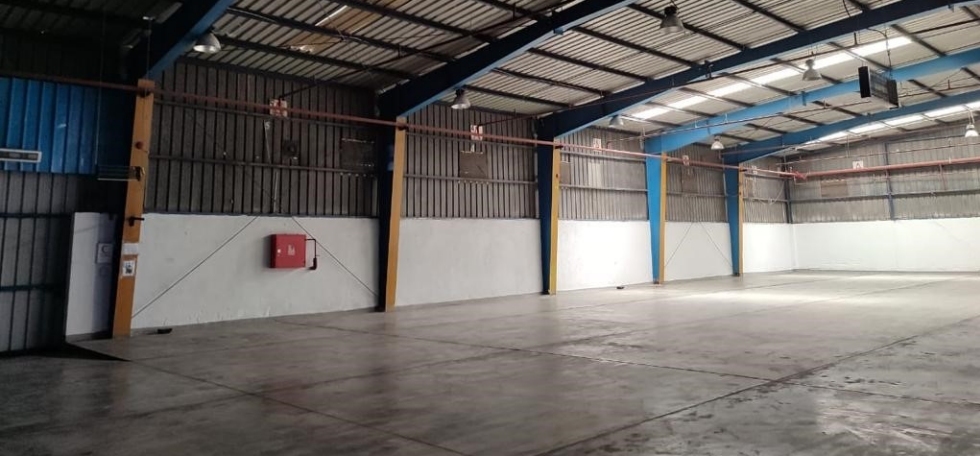
Alexander Global Logistics Now Offers QAKE Certified Pulp and Paper Warehouse in Alexandria Port
Nov. 11, 2021 - Alexander Global Logistics (AGL) announced that it recently acquired a warehouse facility in Alexandria, Egypt, for the handling of pulp and paper shipments.
According to AGL, the acquisition was prompted by a North American pulp and paper producer seeking a fully equipped, bonded warehouse dedicated to pulp and paper that also needed to be QAKE (Quality Assurance Key Environment) certified within a six-month timeframe. This meant special hygiene and maintenance measures, qualified and trained personnel, modern technology, GMP specifications, and more.
In addition, COVID-19 protocols were in-place and tasks such as on-site inspections were not always possible.
“With our international team of highly qualified staff members as well as our partner company located directly in Alexandria, we were able to conduct our regular inspections and training remotely,” AGL said. “The well-being of all involved are of utmost priority, therefore we reacted quickly in making sure all health standards were met to prevent the spread of the pandemic and to keep everyone safe.”
Renovations of the warehouse started with a new roof, flooring, lighting, and paint. Installations of EDI to track the inventory efficiently, modern pest control devices and disinfectant stations, were also carried out as part of the conditions prior to the audit taking place. AGL provided training videos shown from previous AGL projects to all personnel, as well as weekly video calls to ensure everything was communicated clearly and that all requirements were being met.
The upgraded warehouse in Alexandria Port includes modern handling equipment (e.g. electric forklifts) with a storage area of 2.000 m² and an outdoor storage yard of 20.000 m². Along with humidity and temperature control system, the facility now provides the foremost services for AGL’s client and becomes one of many dedicated warehouses worldwide suitable for pulp and paper that AGL offers.
AGL noted that the project was completed on-time and on-budget, and has successfully become the fourth warehouse worldwide to be QAKE certified.
“Through our in-house developed AGL-Web, we can offer our customers a tailor-made solution that fits their needs. AGL-Web enables customers to monitor stock levels in real-time and have them integrated into their IT System. Additionally, pulp producers can use AGL web to control inventory and provide Vendor Managed Inventory (VMI) solutions to their customers,” the company added.
SOURCE: Alexander Global Logistics |
|
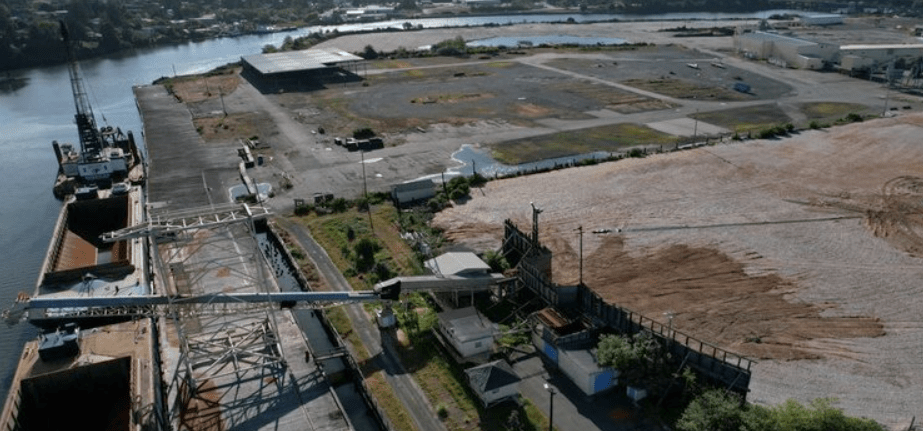
Port of Coos Bay Enters into Purchase and Sale Agreement to Acquire the Former Georgia Pacific Mill Site
Nov. 1, 2021 (Press Release) - The Oregon International Port of Coos Bay (Port) is pleased to announce that it has entered into a Purchase and Sale Agreement (PSA) to acquire the former Georgia Pacific Mill site. The Port and the current owner, CDC Inc. of St. Louis, MO have negotiated the terms of the PSA with the goal of job creation on Oregon’s South Coast. The Port’s intent in this acquisition is to rehabilitate the site and return it to service, utilizing the facility for the movement of goods and commodities through maritime, rail, and trucking for both domestic and international markets. With the PSA fully executed, the Port and CDC Inc. will now enter into a 60-day due diligence period, with the intention to finalize the sale before the end of the year. Once the sale is finalized, the Port will conduct additional environmental, permitting, engineering, and design work prior to initiating construction.
With the closure of the Georgia Pacific Mill and impending closure of the Shutter Creek Correctional Institution, the region has seen a significant number of jobs lost. “With this facility back in service, it is anticipated that it will bring with it the addition of well-paying family wage jobs to the area including longshore labor, yard workers and cargo handlers, as well as additional rail line crews,” said John Burns, Port CEO. The site could be ready to move a limited amount of cargo initially following the conclusion of phase I construction as early as mid-2023 if not sooner.
The Port is currently working with multiple businesses with interest in moving products and commodities through the Port of Coos Bay to avoid congestion and its associated costs and inefficiencies found at other West Coast Ports. Through ownership of this facility, the Port will have access to a wharf, yard footprint, and rail service to facilitate regional economic development in a more effective manner -- and with it the jobs and economic diversity that will help the region and State to thrive.
This project has been championed by both the State and Federal legislative delegations. Congressman Peter DeFazio fought to include funding in the amount of $4.5MM in the reconciliation bill. These funds will be utilized to build out rail infrastructure on site, as well as to conduct improvements to the wharf infrastructure. Senator Dick Anderson and Representative Boomer Wright were both instrumental in securing funding to acquire the property through the Coronavirus State Fiscal Recovery Fund, both allocating $2MM respectively. The hard work and commitment of both our State and Federal Delegation to the long-term success of the region were instrumental in the success of this project.
SOURCE: Port of Coos Bay |
|
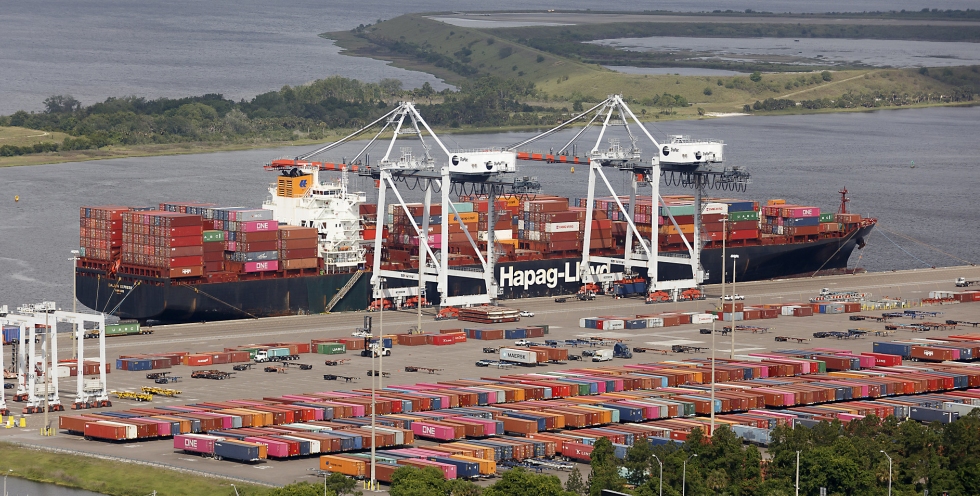
Hapag-Lloyd Reroutes European Container Service to JAXPORT
Oct. 18, 2021 - Hapag-Lloyd has temporarily rerouted a European-US container service through the Jacksonville Port Authority (JAXPORT). The change is part of an effort to “optimize our service portfolio, stabilize schedules and adapt to market needs,” according to Hapag Lloyd.
Hapag-Lloyd’s Atlantic Loop 3 (AL3) rotation will begin calling JAXPORT’s TraPac Container Terminal with the arrival of the container ship Hudson Express in mid-November. The service call will last for at least eight weeks and bring an estimated 1,000 additional TEUs (containers) a week through JAXPORT.
The port rotation will be Antwerp, Belgium; Hamburg, Germany; London; Charleston; Jacksonville; and Norfolk.
“During this time of unprecedented port disruption, Jacksonville’s efficiencies on both the landside and waterside continue to make us stand out in the industry,” said JAXPORT CEO Eric Green. “With our strategic location—and the efficiencies of our labor, terminal operators, facilities, and transportation network—there’s no question Jacksonville is an extremely attractive option for ocean carriers and shippers looking to take advantage of the ease of doing business Jacksonville offers.”
Jacksonville has no container vessels waiting at anchorage and offers shippers two-way river traffic to transit to and from berths.
Major infrastructure investments are underway to prepare JAXPORT for continued growth, including more than $200 million in berth and terminal enhancements at the port’s Blount Island Marine Terminal. The federal project to deepen the Jacksonville shipping channel to 47 feet through Blount Island is anticipated to be completed in 2022.
The AL3 service complements Hapag-Lloyd’s existing services from JAXPORT to destinations in Asia through THE Alliance, as well as the ABUS TANGO South American service with Hamburg Süd.
Located in the heart of the Southeast U.S., JAXPORT is Florida’s largest container port by volume and one of the nation’s top vehicle-handling ports. More than 98 million consumers live within a day’s drive of JAXPORT, with major interstates located as close as a mile from port terminals.
SOURCE: JAXPORT |
|
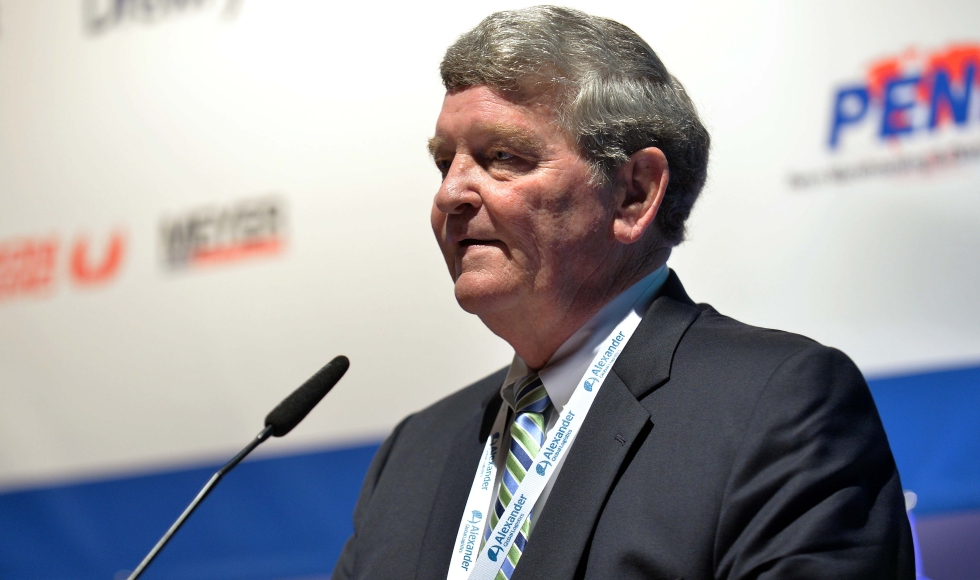
Buddy Greene, Former President of IFPTA, Has Passed
From Alan Bog, President, IFPTA
Dear Members,
It is with great sadness we learned this week that Buddy Greene passed away on 14 September. Buddy was my predecessor as President of IFPTA.
I had the privilege of working with him as a Director and Officer of the Association since I was first elected to the Board in 1999.
From the start I was impressed by his dedication, his attention to detail and his thoroughness. He became President after the sudden loss of Paul Doiron.
Buddy was a strong President. He led us through a difficult period when our partner at the time was having difficulties and at the time saved the Transport Symposium in Mobile, and we have grown in strength since then.
Buddy was a gentleman, and a good friend; he will be missed by all of us at IFPTA and by many friends in the industry.
I was extremely flattered when he asked the Board of Directors to elect me to take over the Presidency from him when he stepped down at the Savannah Symposium. Since then he has been very supportive and always available if I needed any advice.
On behalf of IFPTA, I am sure you will join me in sending our deepest sympathy to his dear wife Pat.
I asked Scott Menzies, who worked alongside Buddy as Secretary of IFPTA for many years, to write a few words about him. I am sure you will find his contribution very moving.
Remembering Buddy Greene
One of the greatest blessings in our life has been getting to know Buddy and Pat Greene. We lost Buddy on September 14th and he will be missed by a mountain of people who got to know him over a long and successful career at Cooper /T. Smith.
Buddy loved the IFPTA and he loved the shipping community. As soon as you met Buddy you quickly learned that he knew more about our industry than anyone you would ever meet. He could tell you exactly what kind of productivity you could make on any carrier’s ship with just about any commodity.
How did he know all this? . . . because he did it!
Buddy was also a whiz with numbers and could calculate so quickly it would make your head spin. It did not matter whether you were a shipper, a carrier, a producer, a forwarder or a competitor. He just liked people and they liked him.
Getting to know Buddy and Pat over the many decades of Transport Symposiums he made you feel like family because for him, you were.
Buddy led the IFPTA as President through some good and bad times, but never faltered in his commitment of how important the Association was for our industry. At that time, relationships were everything, and as soon as you met Buddy you were in a relationship.
We are going to miss his great sense of humor and wonderful laugh. We are going to miss his amazing depth of knowledge about our industry and his tremendous loyalty to the IFPTA. Mostly, we are going miss a very special man who touched many hearts in the best possible way.
Thank you Buddy for your leadership, friendship, loyalty and the feeling of family. Thank you Pat for sharing Buddy with us. We all send our deepest sympathies and love.
Scott & Susie Menzies |
|
|